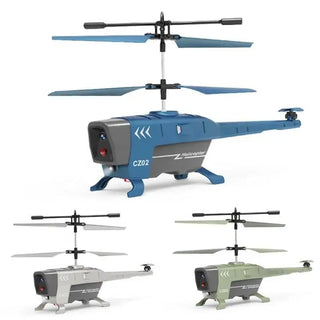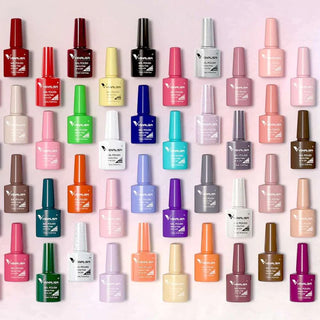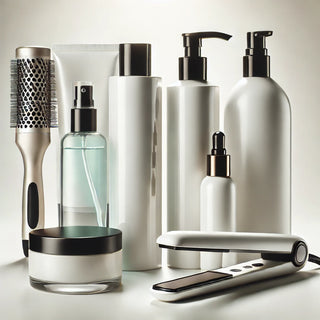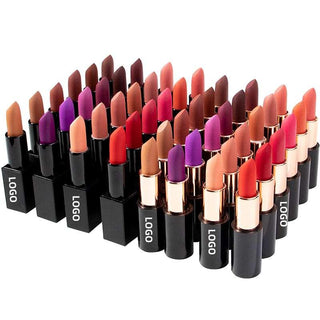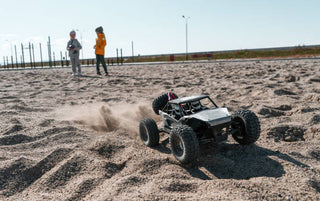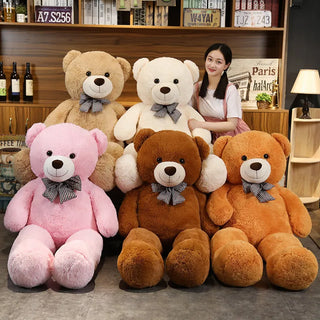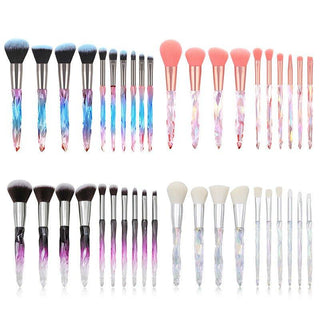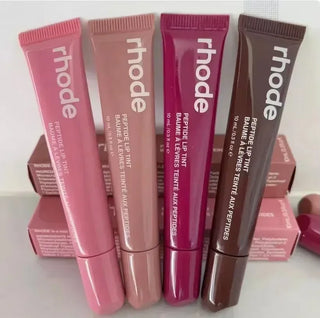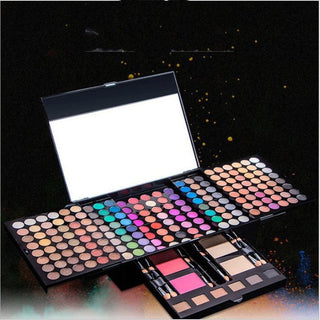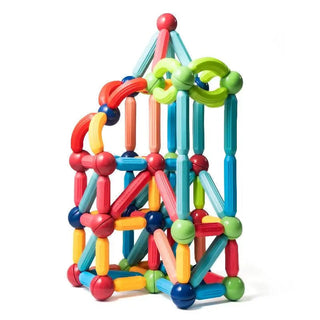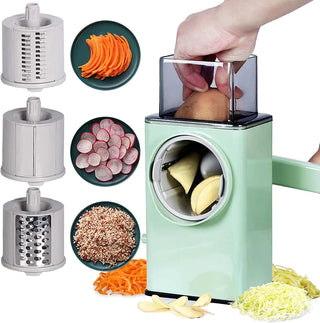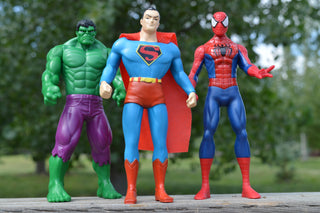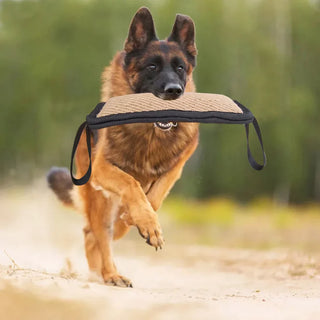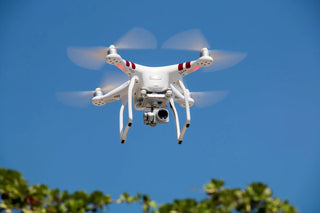Taking your furry friend on a plane can be a bit daunting, but with the right gear, it doesn't have to be a headache. Choosing the correct sky kennel is super important for making sure your pet travels safely and comfortably. We'll break down what you need to know, from airline rules to picking the perfect size and features for your specific pet. Let's get your pet ready for their next adventure!
Key Takeaways
- Always check airline rules for sky kennel requirements, as they can differ.
- Make sure your pet can stand, turn around, and lie down comfortably in the sky kennel.
- Look for kennels with sturdy construction, secure metal locking mechanisms, and good ventilation on all sides.
- Consider modifications like zip ties or metal bolts for extra security, especially for international travel.
- Measure your pet accurately and compare it to the sky kennel dimensions to get the right fit.
Understanding Airline Kennel Requirements

So, you're planning to fly with your furry friend, and the first big hurdle is the kennel. It's not just any old crate; it has to meet specific airline standards. Think of it as your pet's passport to the skies. Getting this wrong is actually the most common reason pets get turned away at the airport, so it's worth paying attention to the details. Many kennels are advertised as 'airline approved,' but our experience shows that sometimes, these claims don't quite hold up when you get to the check-in counter. It's better to know what the airlines are really looking for upfront.
Key Features of Airline-Approved Kennels
When you're shopping for a kennel, keep an eye out for a few key design elements that most airlines insist on. These aren't just random rules; they're in place for your pet's safety and the ease of handling by airline staff.
- Sturdy Construction: The kennel should be made of hard plastic, not wire or collapsible fabric. Wire crates can bend or break, and soft-sided carriers don't offer enough protection. Some airlines even reject kennels with plastic clip fasteners, preferring metal bolts or screws for a more secure closure.
- Ventilation on All Sides: Your pet needs to breathe! Airlines require ventilation openings on at least three sides, but honestly, aim for all four. This ensures good airflow, even if the kennel gets bumped or stacked.
- Secure Door: The door should be made of metal and have a reliable locking mechanism. Many airlines require that the door's locking mechanism extends beyond the kennel's frame, acting as a handle for easy carrying without the risk of your pet biting the handlers.
- No Top Doors: Kennels with doors on the top are a definite no-go. They can pop open unexpectedly during transit.
- Solid Floor: The bottom of the kennel must be solid, without any holes. This might seem odd, as many popular brands have ventilation holes in the floor, but these are often rejected because they compromise the kennel's structural integrity.
It's important to remember that even if a kennel seems to meet the basic requirements, modifications might still be needed, especially for international travel. Always double-check with your specific airline.
Why Specific Kennel Designs Are Crucial
The reason behind these strict kennel rules is pretty straightforward: safety and practicality. A well-designed kennel protects your pet from injury during the bumps and shifts of air travel. It also makes it easier for airline personnel to move the crate without causing harm to your pet or themselves. For instance, the requirement for side handles or protruding rims on the kennel allows handlers to grip it securely. Without these, they might try to use the door handle, which could fail or allow your pet to escape.
Common Kennel Rejections and How to Avoid Them
Being aware of common pitfalls can save you a lot of stress. Here are a few things that often lead to a kennel being rejected:
- Wire or Soft-Sided Crates: As mentioned, these just don't offer the protection needed for air travel.
- Kennels with Wheels: Wheels can cause the kennel to roll around the cargo hold, which is unsafe.
- Plastic Clip Fasteners: These can break or come undone. Always opt for kennels with metal bolts or screws, or be prepared to reinforce them yourself.
- Inadequate Ventilation: If your kennel only has vents on two sides, it might be rejected, especially for longer flights or international travel where stacking is common.
- Improper Size: If the kennel is too small for your pet to stand up, turn around, and lie down comfortably, it will be rejected. We'll cover sizing in more detail next.
Always verify the latest regulations with your specific airline before your travel date, as rules can change.
Selecting the Correct Sky Kennel Size

Picking the right size for your pet's travel kennel is super important. It's not just about comfort, but also about meeting airline rules. If the kennel is too small, your pet might not be allowed to fly, which is a huge hassle. You need to make sure your pet can stand up, turn around, and lie down comfortably inside. Think of it like packing for a trip – you wouldn't want to be crammed into a tiny suitcase, right? Your pet feels the same way.
Measuring Your Pet Accurately
Getting the measurements right is the first step. You'll need a soft measuring tape for this. Here’s how to do it:
- Height: Measure your pet while they are standing. Get the distance from the floor to the top of their head or the highest point of their ears (whichever is taller). Make sure their ears aren't flopping over when you measure.
- Length: Measure your pet from the tip of their nose to the base of their tail. Don't include the tail itself in this measurement.
- Width: While they are standing, measure them at their widest point, usually across the shoulders or hips.
Once you have these numbers, you'll add a few inches to each. A good rule of thumb is to add about 2-4 inches to both the height and length measurements. This extra space is for comfort, allowing them to shift positions easily.
Remember, these measurements are for the pet itself. The kennel dimensions will need to be larger to accommodate this. It's always better to have a little extra room than not enough.
Matching Pet Measurements to Kennel Dimensions
After you've got your pet's measurements, it's time to compare them to kennel sizes. Most kennel manufacturers provide sizing charts. These charts usually list the maximum pet height and length that a particular kennel model can accommodate. Always check the kennel's internal dimensions, not just the external ones, as the walls take up space.
Here’s a general guide to help you match:
- Kennel Length: Should be your pet's length (nose to base of tail) plus about half their leg length. They need room to stretch out a bit.
- Kennel Height: Should be your pet's standing height (floor to top of head/ears) plus a little extra. Their ears should not touch the top of the kennel when they stand.
- Kennel Width: Should be about three times your pet's width at their widest point.
If your pet falls between sizes, it's usually best to go with the larger kennel. This gives them more room to move and reduces the chance of rejection by the airline.
Considering Breed-Specific Space Needs
Some breeds just need more room than others, even if their measurements seem to fit a standard size. For example, a long-bodied dog like a Dachshund might need a longer kennel than a more compact breed of the same height. Similarly, breeds with tall ears, like a Greyhound or a Great Dane, will need extra headroom.
Think about your pet's typical behavior too. Do they like to sprawl out when they sleep? Do they fidget a lot? If your pet is particularly active or large-boned, opting for the next size up is a smart move. It’s all about making their travel experience as stress-free as possible. Don't guess; measure carefully and choose wisely!
Choosing the Right Sky Kennel Model
So, you've got the measurements down and you're ready to pick out the actual kennel. This is where things get a bit more specific, depending on who's traveling with you. Not all kennels are created equal, and what works for a tiny chihuahua won't cut it for a Great Dane. Let's break it down by pet size.
Kennel Options for Cats and Small Dogs
For our feline friends and the little pups, you're generally looking at the smaller end of the Sky Kennel spectrum. These are designed to give them enough room to stand, turn around, and lie down without feeling cramped, which is super important for their comfort and to meet airline rules. Think of the Petmate Sky Kennel 100 or 200 series. The 100 is really for the teeniest of pets, like cats or toy breeds, while the 200 is a popular choice that offers a bit more wiggle room for small dogs up to about 15 pounds. There's also the BB45 series, which is a good alternative if you want slightly more space for your small to medium-sized pet.
Ideal Sky Kennel Sizes for Medium Breeds
Moving up a notch, if you have a medium-sized dog, like a Beagle or a Cocker Spaniel, you'll want to look at kennels that offer more substantial space. The Petmate Sky Kennel 300 series is often a good fit here. These kennels are built with better ventilation and more secure fasteners, which is always a plus. They're generally suitable for dogs weighing between 25 to 30 pounds, giving them that necessary room to move comfortably.
Spacious Sky Kennels for Large and Giant Breeds
Now, for the big guys and gals, we're talking about the larger Sky Kennel models. For large breeds, the 400 or 500 series are usually the way to go. These are designed with plenty of space so your dog can stand tall and turn around easily. If you have a Labrador, German Shepherd, or a similar-sized dog, these kennels provide the comfort they need. For the truly giant breeds, like Great Danes or Mastiffs, you'll need to step up to the 700 series or even look at specialized international models like the PP90 or PP100 if you're heading overseas. These are built for maximum space and durability, which is key for those longer journeys or specific route requirements.
Remember, even with the right size, always double-check the specific requirements of the airline you're flying with. Sometimes they have their own little quirks or updated rules that you need to be aware of before you head to the airport.
Essential Sky Kennel Features for Safety
When you're getting ready for your pet to fly, the kennel itself is a big deal. It's not just a box; it's their safe space for a long journey. You want to make sure it's built tough and has all the right bits to keep them secure and comfortable.
Ventilation Requirements for Air Travel
Airflow is super important. Think about it – your pet will be in this kennel for hours. The kennel needs to have openings on at least three sides, but honestly, four sides is way better. This helps keep the air moving, which is good for them, especially if the plane gets a bit warm. Some kennels have these little metal grates on the doors, which are great. Just make sure the holes are big enough for air but small enough that they can't chew through them. It’s a fine line, but important.
Secure Locking Mechanisms for Sky Kennels
This is non-negotiable. The door needs to latch securely, and ideally, it should use screws to hold the sides together, not just those plastic clips. Clips can sometimes break or come undone. You want a door that locks firmly, so there's no chance of your pet accidentally opening it or getting out. Some kennels have a really solid, one-piece door that feels much more secure. Also, look for kennels with side handles that stick out a bit. This is so the airline staff can move the kennel without grabbing the door itself, and it stops your pet from biting anyone trying to move them.
Door Construction and Fastener Integrity
Beyond just the lock, the whole door setup matters. The door should be made of sturdy material, usually metal, and fit snugly into the kennel frame. Check that all the fasteners, whether they're screws or bolts, are strong and properly tightened. Some airlines have specific rules about how the kennel is put together, often requiring screws over snap-fit parts. This makes sure the kennel stays in one piece during transit. It’s all about making sure the kennel is as robust as possible for the trip.
It’s easy to overlook the small details when picking a kennel, but things like the quality of the screws and the sturdiness of the door hinges can make a huge difference in your pet's safety during air travel. Always double-check these components before you fly.
Here are some things to look for:
- Sturdy Construction: The kennel should be made of durable plastic that can withstand bumps.
- Secure Fasteners: Screws are generally preferred over clips for assembling the kennel halves.
- Reliable Door Latch: The door should have a strong locking mechanism that cannot be easily opened by the pet.
- Adequate Ventilation: Ensure there are openings on multiple sides for good air circulation. You can find great options like the Petmate Sky Kennel, which is often recommended for its build quality and adherence to airline standards. You can check out various pet travel organizers to see different styles and features that might suit your needs. pet travel organizer bag
Preparing Your Sky Kennel for Travel
So, you've picked out the perfect kennel for your furry friend's upcoming flight. That's a big step! But before you even think about booking, there are a few things you'll want to do to get the kennel ready. It’s not just about having the right size; it’s about making sure it’s safe and comfortable for your pet during the journey.
Recommended Accessories for Sky Kennels
There are a few extras that can make a world of difference for your pet's travel experience. Think of these as comfort and safety boosters.
- Absorbent Pads: These go on the bottom of the kennel. They soak up any accidents, keeping your pet drier and more comfortable. It's a good idea to have a couple on hand, maybe one for the kennel and a spare.
- Water Bowls: Many kennels can be fitted with special bowls that attach to the door. This way, airline staff can provide water without having to open the kennel. Some people use frozen water bottles that slowly melt, but check with your airline first.
- Zip Ties: While most good kennels have secure latches, adding heavy-duty zip ties to the door and sides adds an extra layer of security. This is a simple but highly effective way to prevent accidental openings. Make sure they are the kind that can be easily cut off by airline staff if needed.
Modifications for International Travel
International travel often comes with stricter rules. While buying a kennel that's already IATA-compliant is best, sometimes a little extra reinforcement is wise.
- Reinforce Fasteners: If your kennel uses plastic clips, you'll likely need to replace them with metal bolts and nuts. This is a common requirement for international flights. You'll want to make sure the bolts are long enough to go through both sides of the kennel door and the frame, then secure them with nuts.
- Check Ventilation: Ensure all ventilation openings are clear and not blocked. Some international regulations are very specific about the amount of airflow required.
Applying Travel Stickers and Labels Correctly
Getting the labels right is super important. It's how the airline staff know who's inside and where they're going.
- "Live Animal" Stickers: These should be clearly visible on all sides of the kennel. They alert everyone that there's a living creature inside who needs careful handling.
- Your Contact Information: Include your name, phone number, and destination address. It's also a good idea to put a copy of this information inside the kennel, just in case the outside labels get damaged.
- Airline-Specific Labels: Airlines often provide their own labels for food, water, and destination. Make sure these are applied according to their instructions. Sometimes, it's best to wait until check-in to apply these, especially if they might cover other important information or get damaged during transit to the airport.
It's really worth taking the time to get these details right. A little bit of preparation can prevent a lot of stress on travel day, both for you and your pet. Double-checking everything before you leave home is always a good plan.
Navigating Airline-Specific Sky Kennel Rules
So, you've picked out a great kennel, and you've measured your furry friend perfectly. Awesome! But hold on a sec, before you book that flight, there's one more big thing to sort out: airline rules. Every airline has its own little quirks and specific demands when it comes to pet travel. It's not just a one-size-fits-all deal, unfortunately. What works for one airline might get you a polite, but firm, 'no' from another.
Verifying Current Airline Regulations
It's super important to actually call the airline you're flying with. Don't just guess or assume based on what you read online a year ago. Regulations can change, and sometimes the people at the check-in counter have the final say, even if they're not totally up-to-date on every single rule. They might have specific requirements about ventilation, door latches, or even the type of stickers they want on the kennel. It's always best to get the most current info straight from the source. They might also have specific forms or paperwork you need to fill out before you even get to the airport.
Understanding IATA Standards for Sky Kennels
Most airlines follow guidelines set by the International Air Transport Association (IATA). Think of IATA as the big boss for air travel rules, including for pets. They have detailed standards for kennels, covering everything from size and construction to ventilation and door security. For example, IATA says your pet needs enough space to stand up, turn around, and lie down comfortably. Their rules also cover things like having solid floors (no holes!), secure doors that can't be opened from the inside, and ventilation on all four sides. Some kennels might look good, but they just don't meet these specific IATA requirements, which can lead to a rejection at the gate.
Special Considerations for Different Routes
Flying domestically is often a bit simpler than flying internationally. For international trips, the rules can get a lot stricter. You might need a kennel that's even larger than the domestic standard to accommodate the longer travel times and potential layovers. Some countries have very specific import rules for pets, which can affect the type of kennel you need. For instance, certain countries might require specific types of fasteners or even prohibit kennels with certain features. Always check the import regulations for your destination country well in advance, as these can sometimes dictate kennel choices more than the airline itself. It’s a lot to keep track of, but getting it right means a much smoother trip for your pet.
Here's a quick rundown of common airline requirements:
- Ventilation: Airflow is key. Most airlines want openings on at least three sides, but IATA recommends all four sides for better air circulation, especially on longer flights.
- Door Security: The door needs to latch securely. Many airlines prefer kennels with metal-to-metal locking mechanisms rather than plastic clips, as these are less likely to break or come undone.
- No Wheels: Kennels with removable or fixed wheels are usually a no-go. They can slide around during flight, posing a safety risk.
- No Top Doors: Kennels with doors on the top are also typically not allowed because they can accidentally open.
- Stickers and Labels: Airlines will often provide their own 'Live Animal' stickers and directional arrows. It's a good idea to have these ready or know where the airline places them, as they often cover up important information on the kennel itself.
When flying with your pet, understanding each airline's specific rules for pet carriers, often called "sky kennels," is super important. These rules can change, so it's best to check them before you travel. Want to make sure your pet's journey is smooth? Visit our website for the latest updates on airline pet policies and tips for traveling with your furry friend!
Safe Travels Ahead!
So, picking the right kennel for your pet's flight might seem like a lot, but it's really about making sure they're safe and comfy. We've gone over what the airlines look for, how to measure your furry friend, and what makes a kennel a good choice. Remember, a little bit of planning now can save a lot of stress later. Always double-check with your specific airline for their rules, and when in doubt, go for a sturdy, well-ventilated kennel that meets IATA standards. Your pet will thank you for it with happy tail wags and purrs on the other side!
Frequently Asked Questions
What makes a kennel 'airline approved'?
An airline-approved kennel, often called a Sky Kennel, needs to be sturdy and safe for your pet. It must have hard plastic sides, screws holding it together (not just clips), a strong locking door, and a solid bottom. Airlines want to make sure your pet can stand up, turn around, and lie down comfortably inside.
How do I figure out the right size kennel for my pet?
You'll need to measure your pet carefully. Measure their height when sitting (from the floor to the top of their head) and their length from their nose to the base of their tail. Add a few inches to these measurements for comfort. Then, compare these numbers to the kennel's dimensions. It's important the kennel isn't too small, or your pet might not be allowed to fly.
Are there specific kennel features I should look for?
Yes, good ventilation is super important so your pet can breathe easily. The kennel also needs a secure locking mechanism, usually with screws or strong bolts, to prevent it from opening during the flight. Make sure the door is also very strong and won't pop open.
What kind of accessories can I add to the kennel?
You can add things like a soft mat for comfort, and water bowls that attach securely. Some people freeze water in bowls so it lasts longer. It's also a good idea to have 'Live Animal' stickers and strong zip ties to make sure everything is secure, especially for long trips or international flights.
Can I use any kennel I find at a pet store?
Not always. While many kennels sold in stores are great, some might not meet strict airline rules. For example, wire kennels, kennels with plastic clips, or kennels with holes in the bottom are often not allowed. It's best to check the airline's specific rules or choose a kennel known to be airline-approved.
What are the biggest mistakes people make when choosing a kennel?
The most common mistakes are choosing a kennel that's too small for the pet, or using a kennel that isn't sturdy enough. Also, sometimes people forget that airlines have specific rules about how kennels are put together, like needing metal bolts instead of plastic clips. Always double-check the airline's requirements before you fly.

